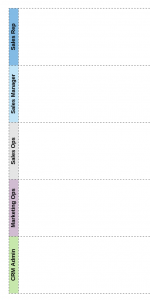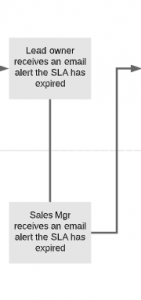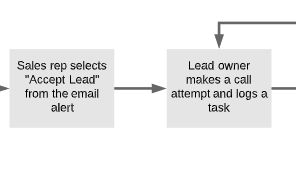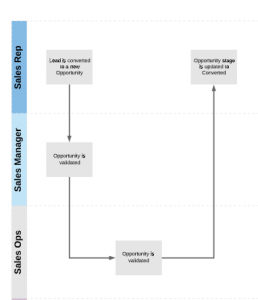Supporting documentation is a key element when delivering any technical project, but when you have a broad audience with different roles and priorities, Business Process Mapping is the ideal approach.
When developing a B2B technical strategy, effective future planning starts with understanding what currently exists. Whether you are planning on transforming your lead management procedure or refining your campaign planning process – having a well-documented current-state is an essential starting point to evolving your organization.
Some may shy away from this exercise because at times, documentation has been perceived as a waste of time due to ever-changing processes or documenting for the sake of documenting. But the benefits far out-weigh the downsides and even help in avoiding delays when issues arise later down the line.
Key benefits to documenting your processes include:
- Identify opportunities for growth. A key component to change management is understanding where you are, in order to identify opportunities to get you where you want to be. When your current processes are already well-documented, opportunities can be easily spotted and get you on your way faster.
- Onboard new employees in a snap. Think about how many times you have repeated the same information over the course of a few months. Then think about how many iterations of documentation exist out there, as your new employee takes notes on what you just explained to them. Instead, share the document with them in advance, and then use your 1 on 1 time with your new employee to answer questions on it.
- Keep everyone on the same page. Questions are bound to come up from time to time around what happens at each stage of the process. Not only does documenting your processes help to keep a consistent understanding, but storing your documentation in a centralized place (e.g. your company’s intranet) keeps updates to a single file in the same location as all your other documentation, making it easier to find for one and all.
Now that we have sorted the main reasons why you should document your process, let’s talk about how you should go about it.
Before you begin, think about your main audience. If most of your readers will be administrators – the more detail you add, the better. Typically, however, you will have a variety of roles requiring access to documentation, in which case a mix of visual designs and detailed documents is the ideal solution.
One approach that is highly effective for a range of audiences is the use of Business Process Mapping. This approach combines the benefits of a visual outline while adding just the right level of detail for your Sales, Marketing and Operations users without info-overload. It works well for technical documentation (for example, if you are overhauling your lead management integration) as well as for business process documentation such as the Lead Qualification Process in Sales or the Campaign Planning Process in Marketing. The Business Process Mapping concept use swim lanes to identify roles (or the responsible party) mixed with flowchart shapes to summarize each step of the process. This approach clearly outlines what is expected and who is accountable each step of the way.
Let’s use the example of how a Lead Qualification Process can be documented using Business Process Mapping:
- Start by defining all the stakeholders throughout the process and add them in their own swim lane:

2. Next, add your first step in the appropriate swim lane by role/step owner using the following questions as a guide:
- How did we get to this step? (dependencies, prerequisites)
- What decisions are required at this step?
- What is the user expected to do at this step?
3. If your next step happens concurrently with the current one, stack the steps underneath one another in the appropriate swim lane. If the next step occurs after the previous step is completed, add the next step after your previous one.
| Concurrent steps | Sequential steps |
 |
 |
4. Draw a line connecting your first step to the last step you created
5. Repeat!
A few more helpful hints when creating Business Process Mapping:

- Ideally there is a single owner per step. If there are multiple stakeholders who must approve a part of the process, add them as individual steps within the appropriate swim lane
- If you have steps taking place simultaneously, stack them one above the other to indicate multiple steps take place at the same time
- Color-code swim lanes of roles/owners to easily distinguish one from the other
- Fancy tools are not required! Business Process Mapping can be done using spreadsheets
- Create the document with all involved stakeholders (after all, no one likes an action item assigned to them when they are not present)
- Store the final document in a centralized location with all other process documentation in a single folder. If the document is easy to find – the process is easy to follow
Finally, get creative! Documentation does not have to be all boxes and borders. The more you spruce up your design with images, memes, and colors – the more attention your document will receive. After all, isn’t the most effective documentation the one that gets used?


